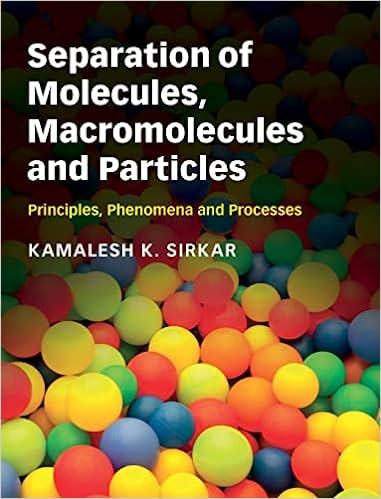Answered step by step
Verified Expert Solution
Question
1 Approved Answer
5 . 4 The equilibrium adsorption of benzene vapor on a certain activated charcoal at 3 3 . 3 C is reported as follows: (
The equilibrium adsorption of benzene vapor on a certain activated charcoal at is
reported as follows:
a A nitrogenbenzene vapor mixture containing benzene by volume is to be passed
countercurrently at the rate to a moving stream of the activated
charcoal so as to remove of the benzene from the gas in a continuous process. The entering
charcoal contains benzene vapor at STP adsorbed per gram charcoal. The temperature and
total pressure are to be maintained at and stdatm, respectively, throughout. Nitrogen is not
adsorbed. What is the least amount of charcoal which can be used per unit time? If twice as much is
used, what will be the concentration of benzene adsorbed upon the charcoal leaving?
b Repeat part a for a cocurrent flow of gas and charcoal.
c Charcoal which has adsorbed upon it at STP tenzene vapor per gram is to be
stripped at the rate of its benzene content to a concentration of
adsorbed benzene per gram charcoal by continuous countercurrent contact with a stream of pure
nitrogen gas at std atm. The temperature will be maintained at What is the minimum rate
of nitrogen flow? What will be the benzene content of the exit gas if twice as much nitrogen is fed?
What will be the number of stages? Ans.: theoretical stages.

Step by Step Solution
There are 3 Steps involved in it
Step: 1

Get Instant Access to Expert-Tailored Solutions
See step-by-step solutions with expert insights and AI powered tools for academic success
Step: 2

Step: 3

Ace Your Homework with AI
Get the answers you need in no time with our AI-driven, step-by-step assistance
Get Started


